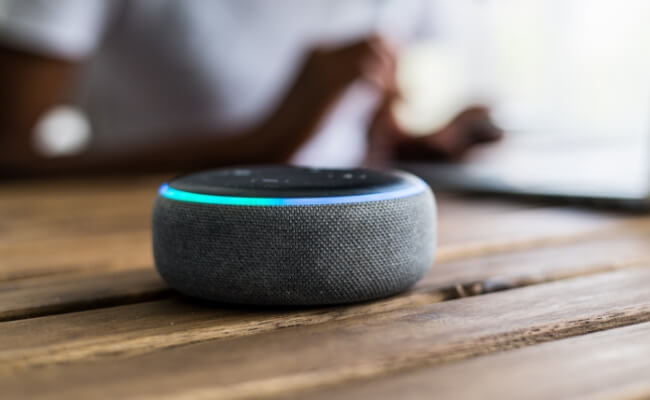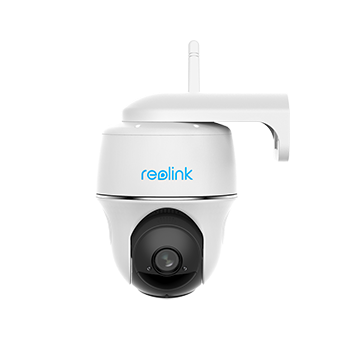How Does Alexa Work? Inside Amazon’s AI Assistant

Amazon’s adoption of Alexa, an artificial intelligent assistant, has changed the manner in which we operate our gadgets while at home. With a click of a button, Alexa can tell you things, play music for you, set alarms, or even control your home appliances, just to mention a few.
But what exactly is this futuristic AI assistant, Alexa, and how does it work? In this article, we are going to look at the concepts behind how Alexa works and various devices that make it possible for Alexa to listen, understand, and respond appropriately to people’s requests.
What is Alexa?
Amazon has developed an intelligent personal assistant called Alexa that can be used to interact with technology through voice. In 2014, Amazon launched a product called Echo, a smart speaker device.
Ever since then, several devices have incorporated Alexa, including smart speakers, security cameras, appliances, and even vehicles. Alexa is cloud-based, implying that it performs the computing processes on Amazon Web Services servers rather than on the device itself.
Alexa’s heart consists of artificial intelligence, which enables it to perform its functions. This is accomplished through natural language processing (NLP) and machine learning algorithms that enable it to improve its recognition abilities over time.
How Does Alexa Work? An Overview
At a high level, Alexa works by taking in audio input from the user, interpreting the speech, formulating a response, and speaking the response back in natural language. How does Alexa work technically? Let’s break down the main steps:
- First, the user sends a request to an Alexa-enabled device. The request could be to ask a question, give a command, or initiate a task.
- Next, the device records a small audio sample and streams it to Amazon’s cloud servers.
- Then, Alexa’s automatic speech recognition (ASR) technology converts the audio to text.
- After that, natural language understanding algorithms analyze the text to identify the user’s intent and extract key details.
- Alexa then formulates a response by querying databases, collecting information, or communicating with APIs.
- Next, text-to-speech technology converts Alexa’s response into an audio clip.
- Finally, the audio clip is streamed back to the user’s device and played aloud in Alexa’s voice.
How Does Alexa Actually Work When Hearing?
Alexa relies on sophisticated audio processing technology to hear and interpret users’ speech. Here are some key components involved in Alexa’s “hearing”:
- Multiple microphones - Most Alexa devices contain an array of seven microphones. Having multiple microphones allows for better audio pickup and noise cancellation. The microphones are positioned to detect audio from any direction.
- Beamforming - This technology focuses on the user’s voice and suppresses ambient noise like music or conversations. It works by enhancing the audio from the microphone closest to the user.
- Echo cancellation - Alexa removes echoes and reverberation caused by sound bouncing off walls and objects. This prevents Alexa from “hearing” unwanted repetitions of the original sound.
- Automatic gain control (AGC) - This automatically adjusts the gain on the microphones to account for differences in distance and voice volume. It ensures Alexa can hear whispers and loud voices equally well.
How Does Amazon Alexa Work When Responding?
Once Alexa has interpreted the user’s request, formulating a coherent response is an immense technological challenge. Here are some of the main technologies that enable Alexa to respond conversationally:
- Natural language generation - Alexa’s response engine constructs grammatically correct sentences and phrases from the structured data retrieved by the request. The tone and wording aim to mimic natural speech.
- Text-to-speech (TTS) - Alexa leverages advanced TTS technology to convert the text response into a computer-generated audio clip. The voice is modeled after recordings of real people to sound more natural.
- Speech synthesis markup language (SSML) - Developers can customize pronunciation, pacing, volume, and more using SSML tags. This helps Alexa employ the appropriate tone for news, jokes, explanations, etc.
- Conversational AI - Alexa’s ability to have natural back-and-forth exchanges relies on context tracking, sentiment analysis, and dialogue management. This gives the illusion of a human-like conversation flow.
How Does Alexa Echo Work?
The Amazon Echo is an Alexa-enabled smart speaker that allows hands-free voice control. It contains a circular array of seven far-field microphones that use beamforming technology to detect voice commands in a 360-degree radius.
The Echo has built-in noise cancellation to suppress ambient sounds and acoustic echo cancellation to prevent audio interference. It connects to the internet via WiFi and to smartphones via Bluetooth.
When you speak to the Echo, it streams audio to Amazon’s cloud servers, where Alexa converts speech to text, formulates a response, and converts it back to speech.
Alexa’s voice response is then streamed wirelessly back to the Echo and played through its built-in speaker. The Echo also has physical control buttons and a light ring to indicate status.
What Amazon Alexa Can Do?
Alexa comes equipped with various capabilities that are right out of the box. Here are some of the popular features and functions of Amazon’s intelligent assistant:
- Basic knowledge - As part of its basic knowledge skillset, Alexa can provide facts, useful calculations, and general knowledge by answering questions about weather forecasts, unit conversions, math problems, word definitions, and much more.
- Smart home control - As a smart home control hub, Alexa serves as a centralized voice-based system for controlling compatible smart devices such as lights, switches, plugs, thermostats, security systems, and appliances.
- Music streaming - For music streaming, Alexa allows you to request songs, playlists, radio stations, podcasts, and other audio content from services like Amazon Music, Spotify, Apple Music, Audible, and more.
- Alarms and timers - You can use Alexa to set alarms that will wake you up in the morning or remind you about events later in the day. Alexa also lets you start, pause, and stop timers hands-free.
- Calls and messages - On devices with screens like the Echo Show, Alexa allows you to make video calls. Alexa also lets you send voice messages to other Alexa users or the Alexa app.
For example, you can watch a live feed from your security camera on your Amazon devices. Simply select an Alexa-compatible model and connect it to your Amazon Hub to enjoy hands-free control. One great option is the Reolink Argus PT. This battery-powered 5MP security camera includes advanced features like motion detection, pan and tilt, and color night vision.
100% Wire-Free PT Camera
2K+ 5MP Super HD; 5GHz/2.4GHz WiFi; Rechargeable Battery & Solar Powered; 355° Pan & 140° Tilt; IP65 Certified Weatherproof; Color Night Vision; 2-Way Audio; 122° Wide Viewing Angle.
FAQs
What is needed for Alexa to work?
For Alexa to work, you need an Alexa-enabled device like an Amazon Echo or a third-party speaker with built-in microphones and speakers.
To access Alexa’s cloud-based processing, the device must be connected to the Alexa set via WiFi or Bluetooth. To manage settings, you must also install the Alexa app on a smartphone or tablet. An Amazon account is required during setup.
Do I have to say Alexa every time?
No, you need not say “Alex” before every request. After responding, the device will remain in an active listening state for a few seconds.
You can make follow-up requests during this brief window without repeating “Alexa.” The device’s light ring indicates when Alexa is actively listening for requests.
Does an Alexa need WiFi?
Yes, Alexa requires an internet connection via WiFi or Bluetooth (on portable devices) to accessAmazon’ss cloud servers. The devices themselves do not contain all ofAlexa’ss processing power onboard.
Conclusion
Alexa significantly advances natural language processing, conversational AI, and seamless human-computer interaction. It has been designed by intricately incorporating microphone arrays, audio processing, machine learning algorithms, and cloud computing to enable it to listen, understand, and respond to voice commands quickly and friendly.
Do you use Alexa at home? Is it useful for you? Share your opinions and experience with us in the comment section. Let's discuss it together!
Search
Subscribe for the Latest Updates
Security insights & offers right into your inbox





























































































































































